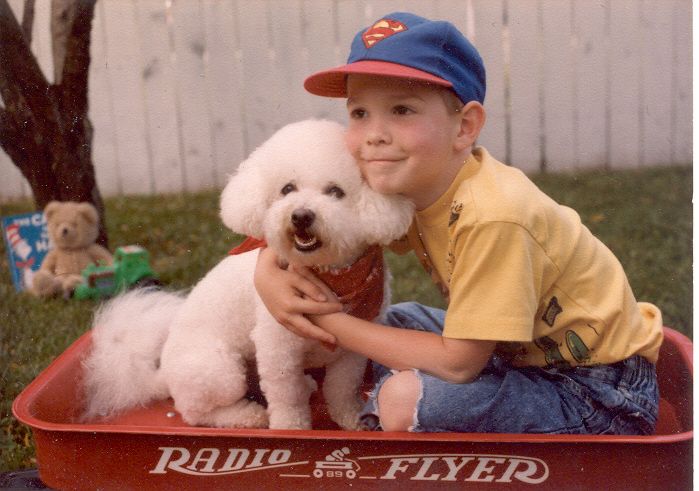 This is the time of year when pets can be exposed inadvertently to toxic substances or tempting taste treats that can be dangerous.
This is the time of year when pets can be exposed inadvertently to toxic substances or tempting taste treats that can be dangerous.One "toxic" plant you don't have to worry much about is the poinsettia, though. These plants are either nontoxic or only slightly irritating to the gastrointestinal tract, depending on the reference source. On the other hand, mistletoe berries are poisonous and it is best to be very careful when hanging mistletoe so that pets are not exposed to the berries. Even one or two berries of this plant may be fatal. Even the products used to help plants make it through the holidays can be a problem.
Some of the solutions used to make the Christmas tree last through a long holiday season can be pretty irritating to mouth or stomach tissues. If you add these to the water in your Christmas tree stand you should be sure that pets can not drink the water.
Plants are not the only problems. Holiday food treats and decorations can be dangerous to pets. It takes a fairly large amount of milk chocolate to cause poisoning problems in dogs and cats but a whole box of chocolates is likely to cause diarrhea at the least and may be toxic to smaller pets.
Tinsel strands seem to be very attractive to cats and these will often cause severe problems, often requiring surgical removal to prevent the death of the cat if they are ingested. For some reason, almost every season a dog or cat in our practice eats a Christmas tree ornament or even one of the light bulbs off the tree. Chewing on the extension cords to the tree lights or the electric train around the tree sometimes leads to problems, too.
The abundance of food found at holiday tables presents a danger even if it isn't cooked by your mother-in-law who believes in partially thawing the turkey then cooking it a 200 degrees. We see a definite increase in pancreatitis around the holidays due to pets getting fat laden table scraps. At least one dog a year manages to eat the whole turkey carcass and has a major case of constipation in a day or so. Try to resist the urge to cover the pet's food with the extra gravy and put the trash out of reach of pets after an attractive meal!
Pets sometimes have a really hard time adjusting to the increases in family activity around the holidays. They may not handle the stress of house guests well. Often just scheduling a few minutes at approximately the same time each day to spend playing with your dog or reviewing those obedience exercises can make the holidays a lot easier for an anxious canine. Cats are a little harder to reassure and it is sometimes best just to make sure they have a safe haven in the house where the guests can't find them, especially the very young guests. Make sure their litter pan is private, too.
If you are going to board your pet for the holidays make sure their vaccinations are current well before the time for boarding and check to see if there are special vaccination requirements at the boarding kennel, such as requiring Bordetella (kennel cough) vaccination. Make sure you have all the contact numbers for wherever you will be written down for the kennel, pet sitter or veterinary hospital. You might even consider giving your vet written permission to treat your pets in your absence, especially if your relationship with your vet is not close enough to be sure he or she would be comfortable caring for the pets without your permission.
Do not tranquilize pets for air travel if you are taking them with you, unless you are absolutely certain it is necessary. A recent review of pet deaths during airplane trips revealed that most of the pets who died had been sedated. The effects of sedatives are intensified at higher altitudes and even though cargo holds are pressurized they are at a lower atmospheric pressure than is found at ground level. If you do have to sedate a pet follow the veterinarian's directions EXACTLY. It could save your pet's life!
If you take a little time to prepare and think about the special risks holidays impose your pet should be safe. Just in case, make sure you know the number of the emergency veterinary hospitals in your are and can drive by it to be sure you can find it an emergency when you may not be thinking as clearly as on an ordinary day.











.jpg)

































